Search alphabetically (by title):
- ALL
- #
- 0
- 1
- 2
- 3
- 4
- 5
- 6
- 7
- 8
- 9
- A
- B
- C
- D
- E
- F
- G
- H
- I
- J
- K
- L
- M
- N
- O
- P
- Q
- R
- S
- T
- U
- V
- W
- X
- Y
- Z
Titles
Roma A. King Jr.
|
Filed under: Literature & Literary Criticism
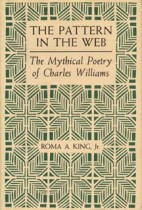
Charles Williams has achieved considerable reputation for his novels. He has been recognized as a brilliant theologian and a sensitive literary critic. But Williams himself wished most to be remembered as a poet, and trusted his future literary reputation to the two-volume series of poems on the Arthurian theme, Taliessin Through Logres and The Region of the Summer Stars. The emphasis in this study is on the quality of these poems as poetry and only secondarily upon their religious content. Although essentially Christian, they are placed within the context of the multifaceted, many-changing forms of recurring myths. Thus they represent one of the few attempts in the twentieth century to encapsulate and age-old and ever-recurring “pattern in the web” in a brilliant structure that is thoroughly modern.
Filed under: Literature & Literary Criticism
John Dolibois
|
Filed under: Autobiography & Memoirs, Diplomatic Studies, European & World History
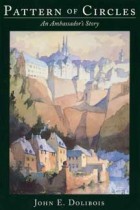
Pattern of Circles is a success story, for its author and his country. John E. Dolibois was born December 4, 1918, in Luxembourg. His mother died weeks later, and he was raised by an older sister until she left for Akron, Ohio, with her American husband. In 1931, John came to Akron with his father and thus began a fascinating life journey.
Filed under: Autobiography & Memoirs, Diplomatic Studies, European & World History
M. J. Heisey
|
Filed under: Religion
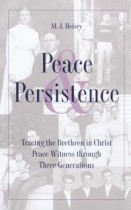
In the first half of the 20th century, American society mobilized for the three great wars: World War I, World War II, and the Cold War. During this tumultuous period, the Brethren in Christ joined other pacifists in opposing participation in the mobilizations. Like the Amish, Mennonites, and Church of the Brethren—other groups descended from sixteenth-century European Anabaptists—the Brethren in Christ held nonresistant pacifism as a fundamental aspect of their identity. They carried out their peace witness, however, not as an isolated community but as one integrated economically, technologically, and culturally into American society.
Filed under: Religion
Galeeb Kachra
|
Filed under: Peace and Conflict Studies, Recent Releases

In Peace and Security in Kenya: The USAID Approach, Galeeb Kachra examines the involvement of the US Agency for International Development (USAID) in Kenya following the post-election violence in late 2007 and early 2008 that left the country on the brink of civil war. Through USAID’s Office of Transition Initiatives, Kachra oversaw the Kenya Transition Initiative, which helped Kenyans establish a renewed judiciary, implement a new constitution, and grapple with longstanding land issues. As a country central to American foreign policy in Africa, Kachra argues, efforts to foster peace, reconciliation, and democratic political reform there had real benefits to US security objectives.
Filed under: Peace and Conflict Studies, Recent Releases
Julius A. Amin
|
Filed under: Diplomatic Studies
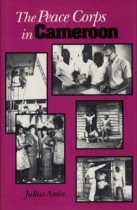
The Peace Corps in Cameroon also contains a comparative analysis of the agency’s work in the neighboring countries of Ghana and Guinea, where its efforts were not as successful. In addition, it features numerous photographs of volunteers at work in Cameroon and maps to complement the text. This pioneer study contributes to Africanist/American scholarship in general, and specifically adds to the historical literature about Peace Corps volunteers in a Third World country. It is must reading for anyone interested in similar endeavors in African countries or in the overall effectiveness of the Peace Corps program.
Filed under: Diplomatic Studies
Lawrence E. Y. Mbogoni
|
Filed under: Peace and Conflict Studies, Recent Releases

Lawrence E. Y. Mbogoni depicts a range of volunteers’ experiences, including anecdotes about their training, their work and social lives in Tanzania, and how they readjusted to life back in America following their service. Although there are several memoirs by returned Peace Corps volunteers from Tanzania, this is the first scholarly study of the agency’s history in Tanzania more broadly. Mbogoni draws extensively on archival resources, Tanzanian newspapers and government reports, and interviews he conducted with returned volunteers. The result is an engaging account of volunteers’ contributions and a critical assessment of how successfully the Peace Corps has met its objectives.
Filed under: Peace and Conflict Studies, Recent Releases
Guy L. Denny and Gary Meszaros
|
Filed under: Environmental Studies, Nature, Regional Interest

Peatlands—and specifically “bogs”—have long been a source of fascination for humans, and these amazing places are truly living relics of the Ice Age. More recently, bogs have come to be regarded as complex and fascinating wetland ecosystems. Peatlands of Ohio and the Southern Great Lakes Region focuses on the sphagnum peat bogs and rich fens of the lower Great Lakes states of Illinois, Indiana, Ohio, southern Michigan, and the glaciated northern corners of Pennsylvania.
Filed under: Environmental Studies, Nature, Regional Interest
Peter Bridges
|
Filed under: Civil War Era
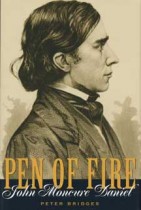
This fascinating first biography of Daniel incorporates much new research, including correspondence between foreign ministers in Turin and their envoys in Washington and a series of private letters between John Daniel and his great uncle Peter Vivian Daniel of the U.S. Supreme Court, U.S. Secretary of War John Floyd, and others. Pen of Fire fills a gap in general American historiography, in published works dealing with nineteenth-century American diplomacy, and in studies of the Civil War.
Filed under: Civil War Era
Angela M. Zombek
|
Filed under: Award Winners, Civil War Era, Justice Studies, U.S. History, Understanding Civil War History
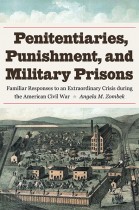
Penitentiaries, Punishment, and Military Prisons confronts the enduring claim that Civil War military prisons represented an apocalyptic and ahistorical rupture in America’s otherwise linear and progressive carceral history. Instead, it places the war years in the broader context of imprisonment in 19th-century America and contends that officers in charge of military prisons drew on administrative and punitive practices that existed in antebellum and wartime civilian penitentiaries to manage the war’s crisis of imprisonment. Union and Confederate officials outlined rules for military prisons, instituted punishments, implemented prison labor, and organized prisoners of war, both civilian and military, in much the same way as peacetime penitentiary officials had done, leading journalists to refer to many military prisons as “penitentiaries.”
Tags: civil war, Penitentiaries, Prison Filed under: Award Winners, Civil War Era, Justice Studies, U.S. History, Understanding Civil War History
Steve French
|
Filed under: Civil War Era, Civil War Soldiers and Strategies, History, Military History, U.S. History, Understanding Civil War History
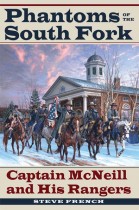
At 3 a.m. on February 21, 1865, a band of 65 Confederate horsemen slowly made its way down Greene Street in Cumberland, Maryland. Thinking the riders were disguised Union scouts, the few Union soldiers out that bitterly cold morning paid little attention to them. In the meantime, over 3,500 Yankee soldiers peacefully slept.
Filed under: Civil War Era, Civil War Soldiers and Strategies, History, Military History, U.S. History, Understanding Civil War History
Subject/Title category archive











